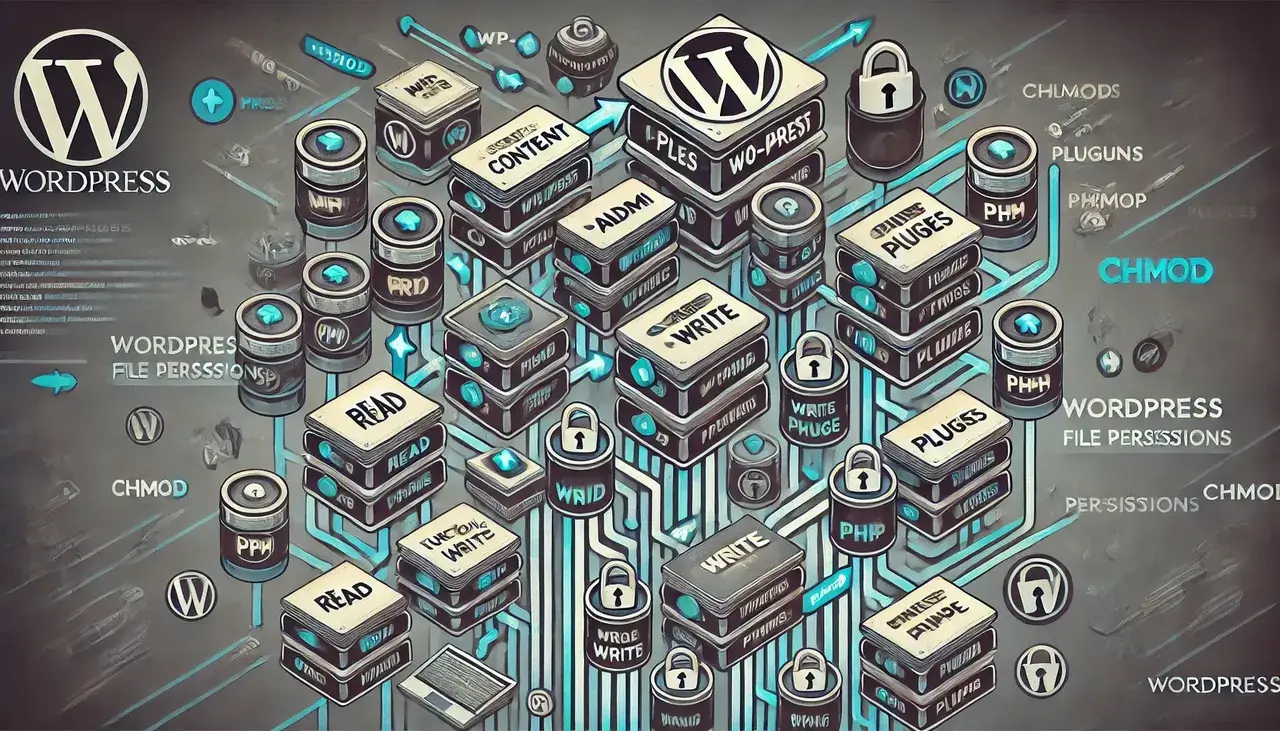Chmod

In the realm of WordPress file permissions, understanding the role of chmod is of utmost importance.
Comparable to a skilled conductor guiding a symphony, chmod, a Linux/Unix shell command, orchestrates the changing of file and directory permissions.
This command is indispensable in granting WordPress the ability to modify files, a crucial task for various operations such as plugin management and media uploads.
By examining the fundamentals of chmod, common scenarios necessitating its use, and best practices for setting permissions, this article aims to empower readers in harnessing the power of WordPress file permissions.
Principal Conclusions
Hide- Chmod is a Linux/Unix shell command that changes file and directory permissions.
- File permissions determine who can read, write, or execute files and directories.
- Incorrect file permissions can lead to security risks and unauthorized access.
- Regularly reviewing and updating file permissions can prevent security vulnerabilities.
What is Chmod? The Basics of Chmod and File Permissions in WordPress
Understanding the basics of chmod and file permissions in WordPress is essential for ensuring the correct configuration of file and folder access rights.
File permissions determine who can read, write, or execute files and directories on a WordPress site.
Exploring the different types of file permissions in WordPress is crucial for maintaining the security and integrity of the site.
There are three basic types of permissions: read (r), write (w), and execute (x).
Each permission can be assigned to three different entities: user, group, and others.
Incorrect file permissions can pose potential security risks, such as unauthorized access, data breaches, or malicious code injection.
It is important to understand the potential security risks of incorrect file permissions in WordPress and take appropriate measures to ensure the proper configuration of file permissions.
Common Scenarios Where Chmod Is Necessary for WordPress File Permissions
Common scenarios in which the correct modification of permissions is necessary include:
- Adding plugins from the WordPress dashboard
- Upgrading plugins
- Performing tasks such as adding images
All of these actions may be restricted by web hosting settings.
Troubleshooting common issues with file permissions in WordPress is crucial for maintaining a secure website.
By setting appropriate file permissions, you can enhance the security of your WordPress site and prevent unauthorized access to sensitive files.
To secure your WordPress site, it is recommended to follow these steps:
- Set the appropriate permissions for files and directories, ensuring that only the necessary users have access to them.
- Regularly review and update file permissions to prevent any potential security vulnerabilities.
Best Practices for Setting Chmod and File Permissions in WordPress
To ensure the security and proper functioning of a WordPress site, it is crucial to follow best practices when setting permissions for files and directories.
Incorrect file permissions can have a significant impact on the performance and security of a WordPress site.
It is important to understand the potential consequences of incorrect file permissions and how to troubleshoot and fix any permission issues that may arise.
One way to troubleshoot and fix file permission issues in WordPress is by using the chmod command.
This command allows users to change the permissions of files and directories.
By using the correct permissions, users can ensure that their WordPress site functions properly and is secure from unauthorized access.
The following table provides an overview of the different file permissions and their impact:
| Permission | Description | Impact |
|---|---|---|
| read | Allows reading of the file | Access to view the file |
| write | Allows writing to the file | Ability to modify or delete the file |
| execute | Allows executing the file | Ability to run scripts or programs |
